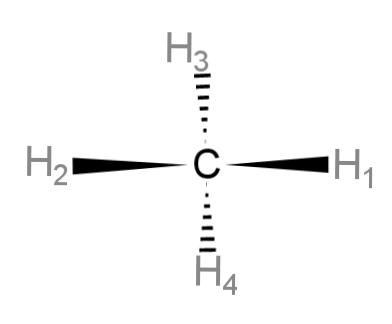
Which of the following is true about Fischer projection?
A. The vertical lines are oriented away from you and the horizontal lines are oriented towards you.
B. The vertical lines are oriented towards you and the horizontal lines are oriented away from you.
C. Both the horizontal and vertical lines are oriented away from you.
D. Both the horizontal and vertical lines are oriented towards you.
Answer
436.5k+ views
Hint: The chemical compounds can be drawn into various structures. One of the structural representations of chemical compounds is through Fischer projection. It includes the three – dimensional representation of the compound using horizontal and vertical lines called wedge and dash respectively.
Complete answer:
Fischer projection is the method of representation of molecules in such a way that they tend to represent three dimensional structures of molecules. This is one of the methods to detect the chirality of the molecule and its orientation.
Fischer projection includes horizontal and vertical lines. These lines are in the form of wedges and dashes. The horizontal lines are called wedges; they are solid lines representing the bonds faced towards the viewer. The vertical line called dash is a dotted line that represents the bonds away from the viewer.
The Fischer projection of methane

The H – 1 and H – 2 are represented by horizontal wedges and are towards the viewer, while H – 3 and H – 4 are away from the viewer and are dash vertical bonds.
Hence, the true statement is the vertical lines are oriented away from you and the horizontal lines are oriented towards you.
So option A is correct.
Note:
Fischer projections are used to represent organic molecules that are commonly carbohydrate sugars, example glucose, and fructose. Simple amino acids can also be represented like alanine, glycine. The importance of this structure is that it can tell the optical activity by determining the chiral and achiral carbon centre.
Complete answer:
Fischer projection is the method of representation of molecules in such a way that they tend to represent three dimensional structures of molecules. This is one of the methods to detect the chirality of the molecule and its orientation.
Fischer projection includes horizontal and vertical lines. These lines are in the form of wedges and dashes. The horizontal lines are called wedges; they are solid lines representing the bonds faced towards the viewer. The vertical line called dash is a dotted line that represents the bonds away from the viewer.
The Fischer projection of methane

The H – 1 and H – 2 are represented by horizontal wedges and are towards the viewer, while H – 3 and H – 4 are away from the viewer and are dash vertical bonds.
Hence, the true statement is the vertical lines are oriented away from you and the horizontal lines are oriented towards you.
So option A is correct.
Note:
Fischer projections are used to represent organic molecules that are commonly carbohydrate sugars, example glucose, and fructose. Simple amino acids can also be represented like alanine, glycine. The importance of this structure is that it can tell the optical activity by determining the chiral and achiral carbon centre.
Recently Updated Pages
Master Class 11 Business Studies: Engaging Questions & Answers for Success

Master Class 11 Economics: Engaging Questions & Answers for Success

Master Class 11 Accountancy: Engaging Questions & Answers for Success

Master Class 11 Computer Science: Engaging Questions & Answers for Success

Master Class 11 English: Engaging Questions & Answers for Success

Master Class 11 Maths: Engaging Questions & Answers for Success

Trending doubts
Which one is a true fish A Jellyfish B Starfish C Dogfish class 11 biology CBSE

The flightless birds Rhea Kiwi and Emu respectively class 11 biology CBSE

Difference Between Prokaryotic Cells and Eukaryotic Cells

1 ton equals to A 100 kg B 1000 kg C 10 kg D 10000 class 11 physics CBSE

One Metric ton is equal to kg A 10000 B 1000 C 100 class 11 physics CBSE

How much is 23 kg in pounds class 11 chemistry CBSE




